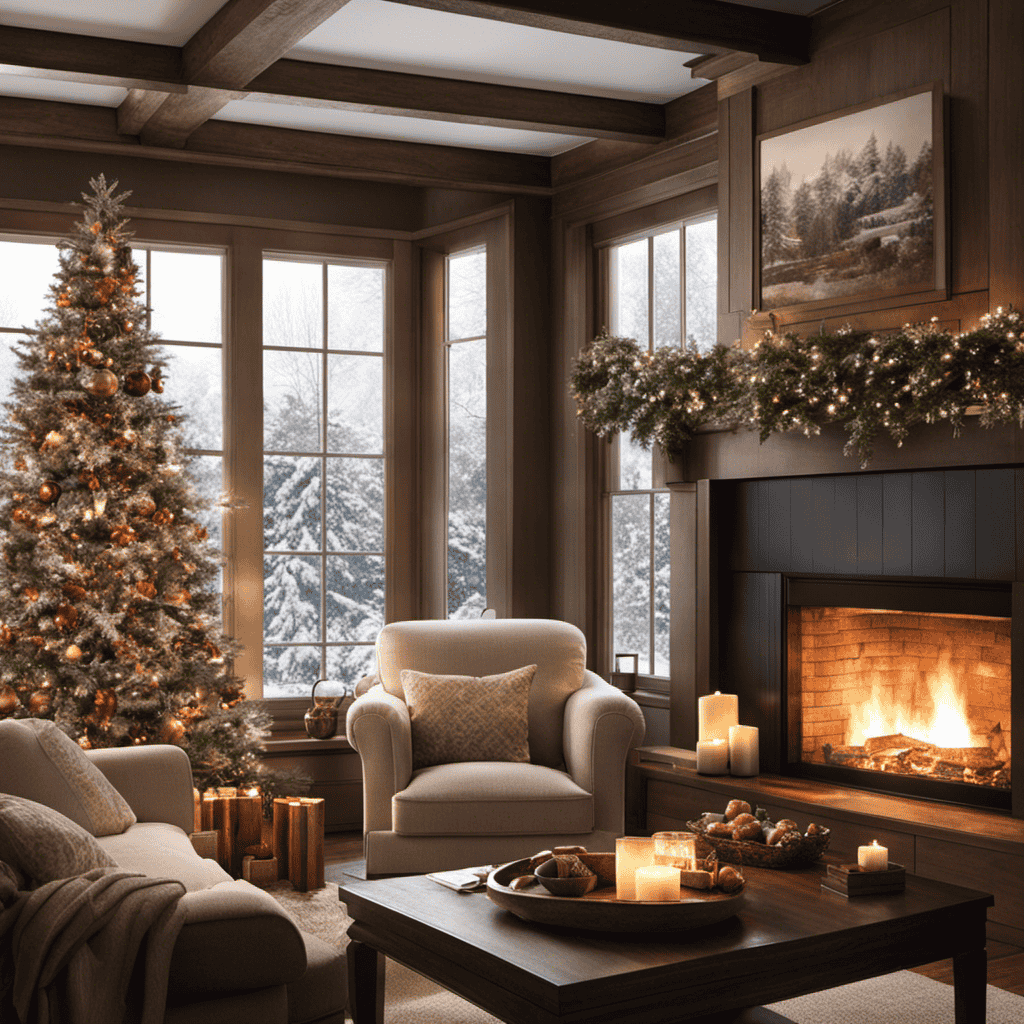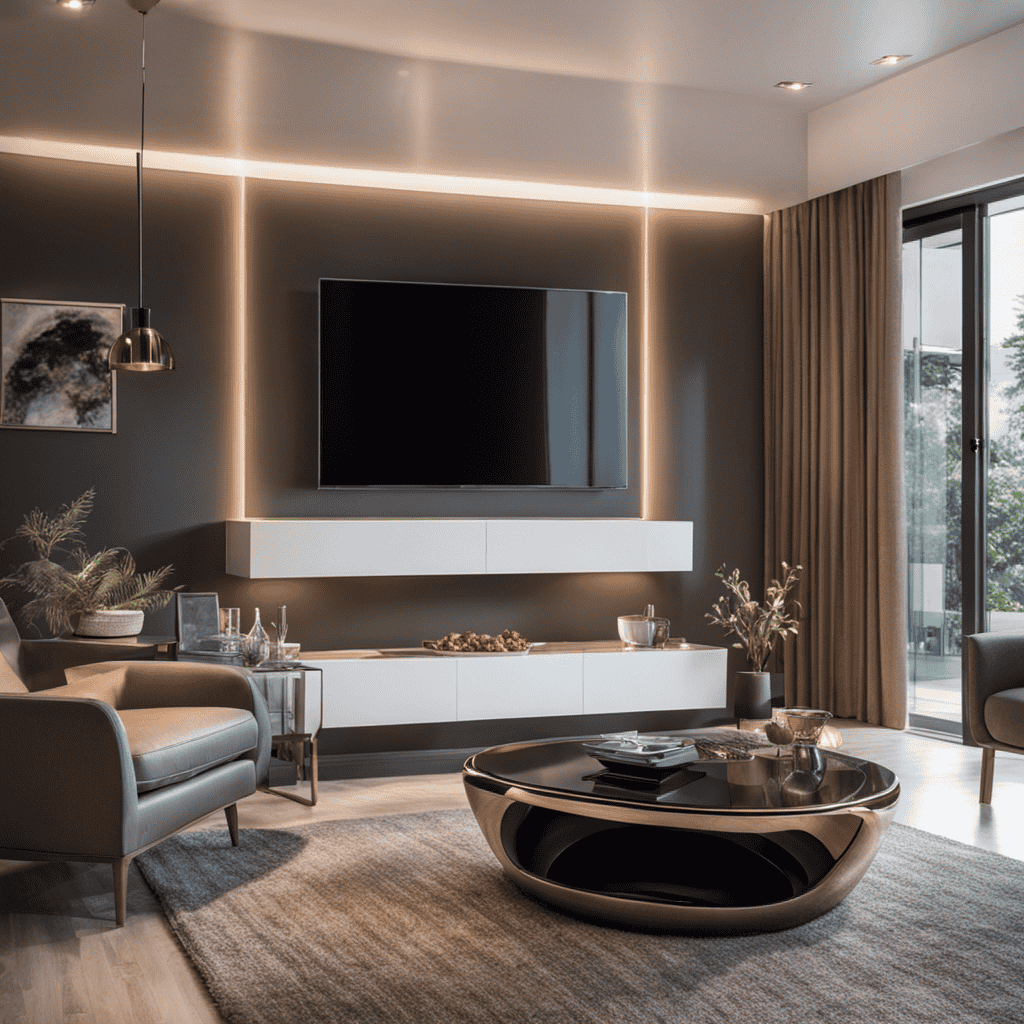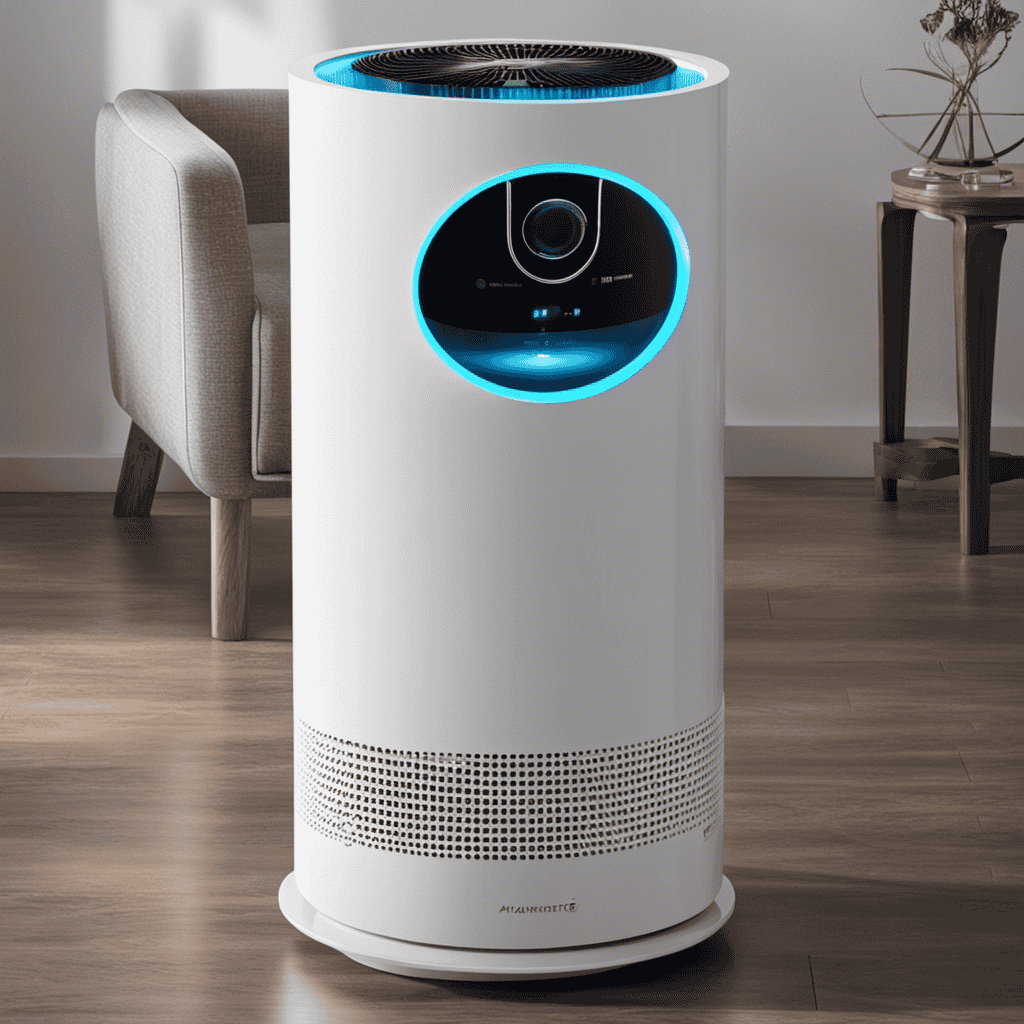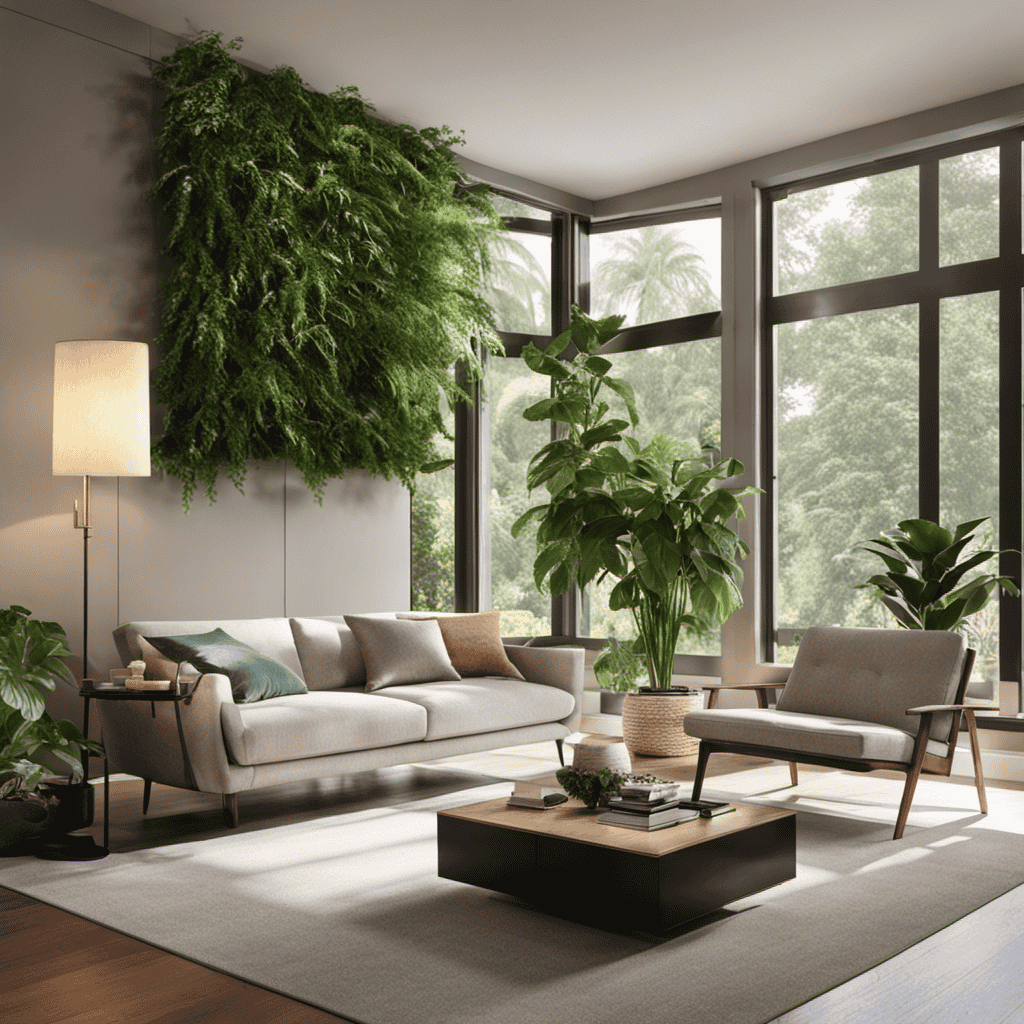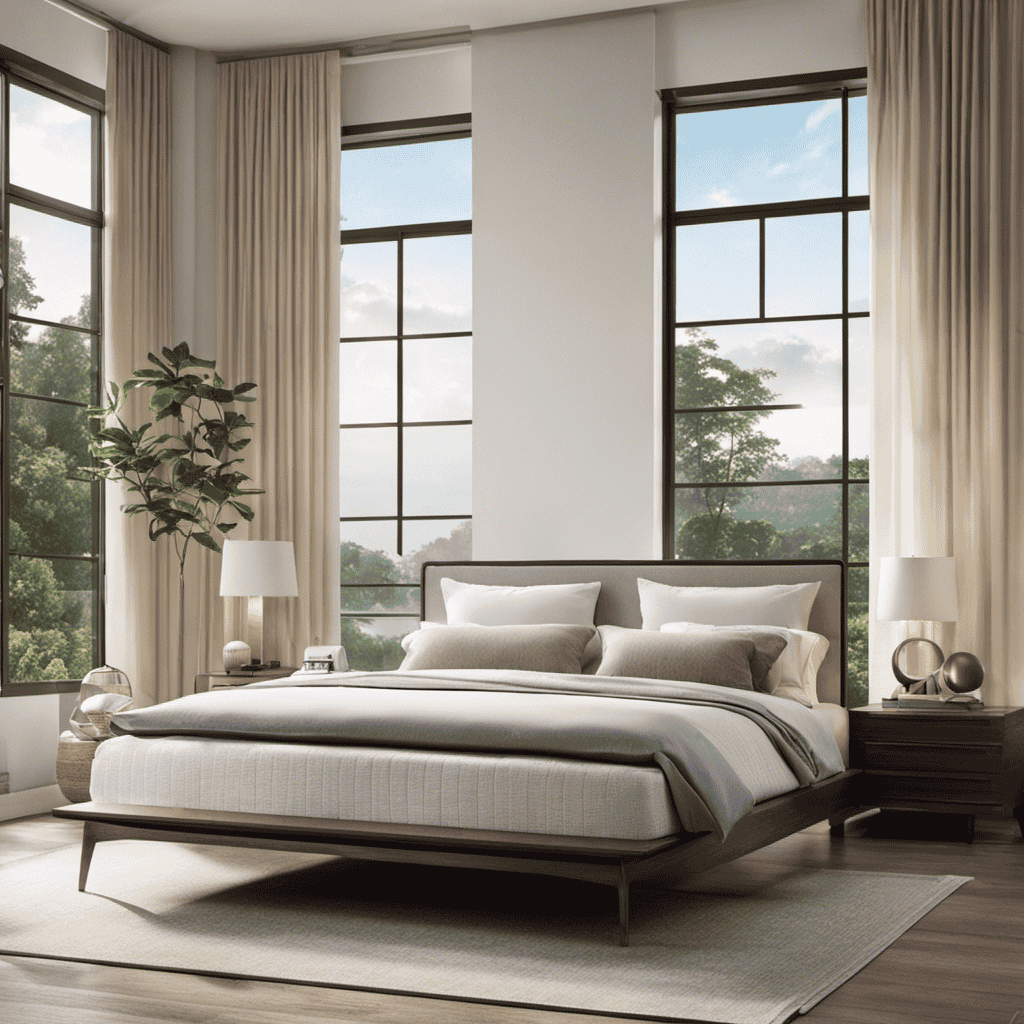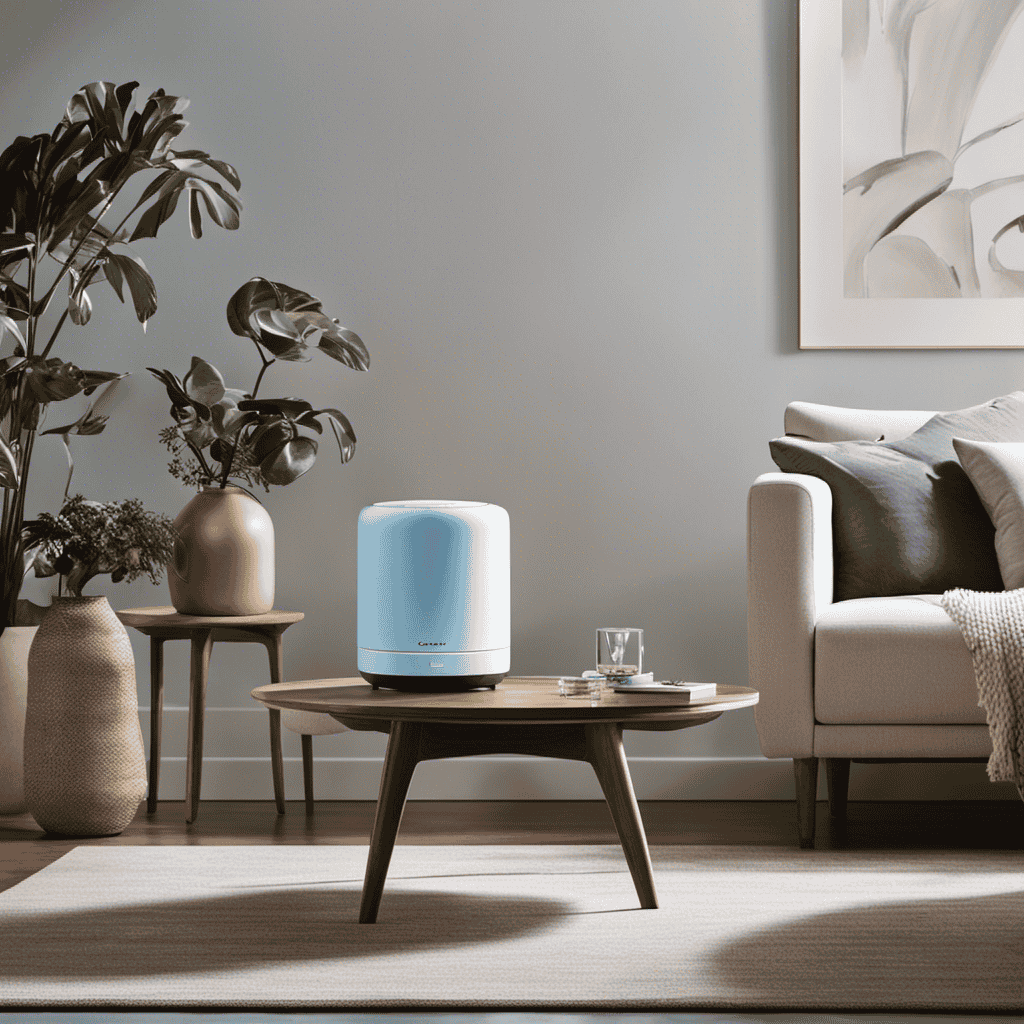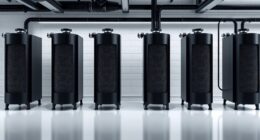As someone who has experienced the unpleasant winter cough, I can relate to the search for relief. That’s why I want to share with you the amazing advantages of using a Hepa air purifier.
These little machines pack a powerful punch, filtering out harmful particles and improving indoor air quality. But just how much can they help? In this article, we’ll dive into the science behind Hepa air purifiers and explore their effectiveness in combating the winter cough.
Get ready to breathe easier this winter!
Key Takeaways
- Winter cough, or acute bronchitis, is primarily caused by viral infections like the flu or common cold.
- Hepa air purifiers remove airborne particles from the air, improving indoor air quality and reducing exposure to cough triggers.
- Winter air pollution, lower humidity levels, and viral respiratory infections are common cough triggers during winter.
- Air purifiers effectively capture particles as small as 0.3 microns, reducing exposure to dust, allergens, and other pollutants that can worsen winter cough.
Understanding the Winter Cough Phenomenon
Understanding the winter cough phenomenon can help us determine how much a hepa air purifier can help.
Winter cough, also known as acute bronchitis, is a common respiratory condition that occurs during the colder months. It is primarily caused by viral infections, such as the flu or common cold. Other factors like dry indoor air, increased exposure to allergens, and weakened immune system can also contribute to winter cough.
While there are home remedies available to alleviate symptoms, such as staying hydrated, using humidifiers, and avoiding irritants like smoke, a hepa air purifier can provide additional relief.
How Hepa Air Purifiers Work
To get relief from your winter cough, you’ll want to know how hepa air purifiers work. These purifiers are designed to remove airborne particles from the air, helping to improve indoor air quality and reduce respiratory symptoms. Here are some key points to consider:
-
Advantages of hepa air purifiers over other types:
-
HEPA filters are highly effective at capturing small particles, including allergens, dust, and smoke.
-
They have a high filtration efficiency, removing up to 99.97% of particles as small as 0.3 microns.
-
HEPA filters are long-lasting and require minimal maintenance, making them cost-effective in the long run.
-
Common misconceptions about hepa air purifiers:
-
Some people believe that hepa air purifiers produce harmful ozone, but modern models are ozone-free.
-
It’s important to note that hepa air purifiers cannot eliminate viruses or bacteria completely, although they can help reduce their presence in the air.
-
Another misconception is that hepa air purifiers are noisy, but many models are designed to operate quietly.
Understanding how hepa air purifiers work and their advantages can help you make an informed decision when choosing the right purifier for your needs.
The Impact of Winter Air on Respiratory Health
During the winter months, the air quality indoors can greatly impact respiratory health. Certain cough triggers, such as dry air, dust, and indoor pollutants, are more prevalent during this time.
However, using air purifiers can help alleviate these issues by filtering out harmful particles and improving overall air quality.
Winter Air Cough Triggers
Did you know that winter air can trigger your cough? It’s true! Winter air can be a breeding ground for respiratory infections and exacerbate existing respiratory conditions.
Here are some reasons why winter air can be a cough trigger:
-
Winter Air Pollution: During the winter months, air pollution levels tend to increase due to factors such as increased use of wood-burning stoves, higher energy consumption, and stagnant air conditions. These pollutants can irritate the respiratory system and lead to coughing.
-
Lower Humidity Levels: Cold air holds less moisture, resulting in lower humidity levels. This dry air can irritate the airways, leading to coughing and throat irritation.
-
Viral Infections: Winter is known for being flu and cold season. Viral respiratory infections can cause inflammation and irritation in the airways, resulting in a persistent cough.
To alleviate winter cough, it’s important to maintain good indoor air quality and practice good respiratory hygiene.
Benefits of Air Purifiers
You’ll be pleased to know that using an air purifier can greatly improve the air quality in your home.
Air purifiers are highly effective in removing airborne pollutants, such as dust, pet dander, and pollen, which can have a significant impact on respiratory health. These devices work by utilizing filters, such as High Efficiency Particulate Air (HEPA) filters, to trap and remove harmful particles from the air.
HEPA filters are designed to capture particles as small as 0.3 microns, ensuring that even the tiniest pollutants are eliminated. This is particularly beneficial for individuals with respiratory conditions, such as asthma or allergies, as it reduces their exposure to triggers that can worsen symptoms.
Benefits of Using a Hepa Air Purifier for Winter Cough
Using a HEPA air purifier can greatly alleviate winter cough symptoms. Here are three reasons why air purifiers are beneficial for reducing indoor air pollution and allergies:
-
HEPA filtration: HEPA stands for High-Efficiency Particulate Air, and these filters can capture up to 99.97% of airborne particles as small as 0.3 microns. This includes allergens like pollen, pet dander, and dust mites, which can trigger coughing and other respiratory symptoms.
-
Removal of airborne pollutants: Air purifiers can effectively remove indoor pollutants such as smoke, mold spores, and volatile organic compounds (VOCs) that can irritate the respiratory system and worsen coughing.
-
Improved air quality: By continuously circulating and filtering the air, HEPA air purifiers help maintain clean and fresh indoor air, which is especially important during the winter months when windows are often closed and indoor pollutants can accumulate.
Choosing the Right Hepa Air Purifier for Your Needs
When selecting the right HEPA air purifier for your needs, consider factors such as room size, noise level, and filter replacement frequency. It is important to choose a purifier that is appropriate for the size of the room you intend to use it in. A larger room will require a more powerful purifier to effectively clean the air. Noise level is also an important consideration, especially if you plan on using the purifier in a bedroom or office where quiet is necessary. Lastly, filter replacement frequency is something to keep in mind as different brands and models may have varying filter lifespans. Comparing brands and their filter options can help you make an informed decision. Below is a table comparing three popular HEPA air purifier brands and their filter options:
| Brand | Filter Type | Filter Replacement Frequency |
|---|---|---|
| Brand A | True HEPA | Every 6-12 months |
| Brand B | HEPA-type | Every 3-6 months |
| Brand C | True HEPA + Carbon | Every 6-12 months |
Tips for Using a Hepa Air Purifier Effectively During Winter
To effectively use a HEPA air purifier during winter, it’s important to regularly clean or replace the filters. This ensures that the purifier continues to effectively remove airborne particles and allergens from the indoor air, improving overall indoor air quality.
Here are some tips for using a HEPA air purifier effectively during winter:
- Keep the purifier running continuously to maintain clean air throughout the day.
- Place the purifier in the room where you spend the most time to maximize its impact.
- Consider using a purifier with a built-in humidifier to combat dry winter air.
Winter cough prevention is crucial, as cold and flu viruses thrive in dry indoor air. By using a HEPA air purifier, you can reduce the presence of these viruses and improve your indoor air quality, ultimately reducing the risk of cough and other respiratory issues.
Frequently Asked Questions
What Are Some Other Common Causes of Winter Cough Besides Poor Air Quality?
Other common causes of winter cough, besides poor air quality, include respiratory infections like the common cold or flu, allergens such as dust or pet dander, and dry indoor air. Alternative remedies and lifestyle changes can help alleviate symptoms.
Can Using a Hepa Air Purifier Completely Eliminate Winter Cough Symptoms?
Using a hepa air purifier can greatly reduce winter cough symptoms. It’s like a breath of fresh air, filtering out allergens and improving indoor air quality. Compared to humidifiers, hepa air purifiers are more effective in reducing allergy symptoms.
Are There Any Potential Side Effects or Risks Associated With Using a Hepa Air Purifier?
I’ll be discussing potential side effects and risks associated with using a HEPA air purifier. It’s important to consider these factors before determining the effectiveness of the purifier for winter cough symptoms.
How Long Do Hepa Air Purifiers Typically Last Before Needing to Be Replaced?
Hepa air purifiers typically last for about 3 to 5 years before needing replacement. Signs of a worn out hepa air purifier include reduced effectiveness in filtering air and increased noise levels.
Can a Hepa Air Purifier Help With Other Respiratory Conditions Besides Winter Cough?
A Hepa air purifier can help with respiratory conditions like asthma and allergies. It filters out allergens and irritants from the air, reducing symptoms and improving air quality.
Conclusion
In conclusion, using a Hepa air purifier can significantly alleviate the symptoms of winter cough.
Studies have shown that these devices can remove up to 99.97% of airborne particles, including dust, allergens, and pollutants, providing cleaner and healthier air to breathe.
This not only helps in reducing coughing but also improves overall respiratory health during the winter months.
So, if you want to enjoy a cough-free winter, investing in a Hepa air purifier is a wise choice.
